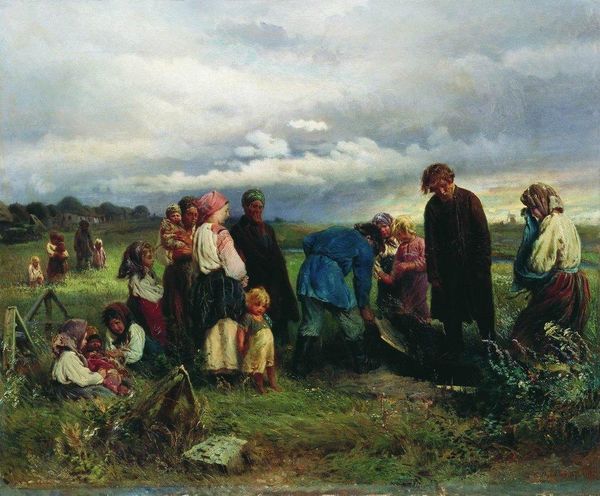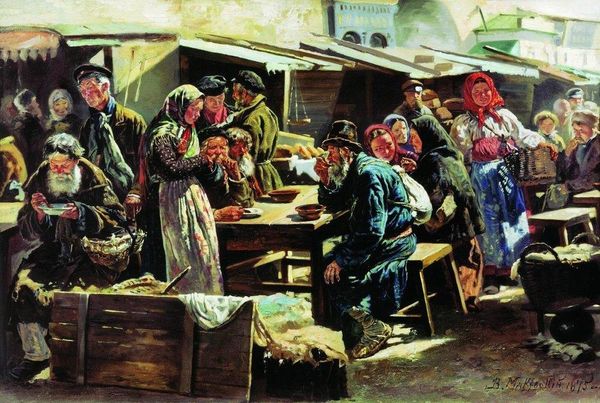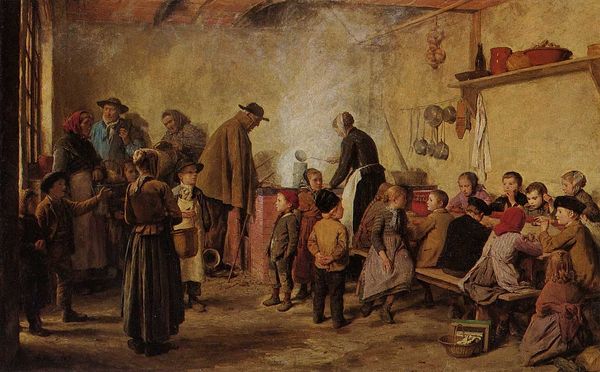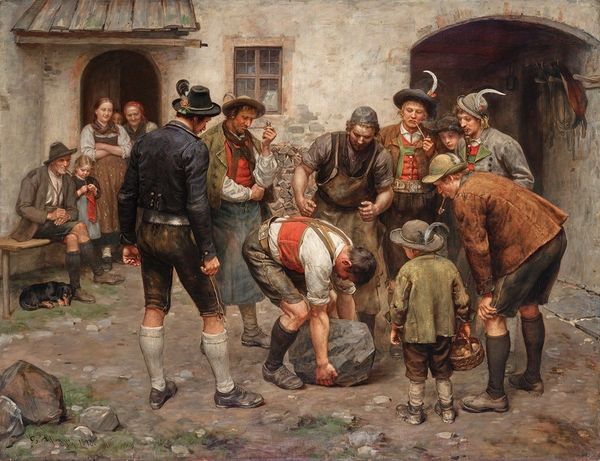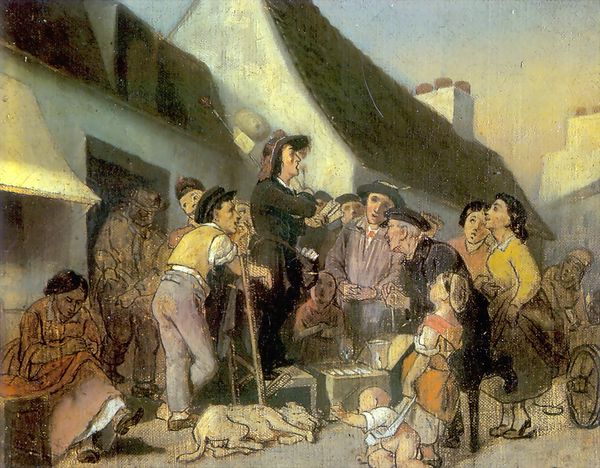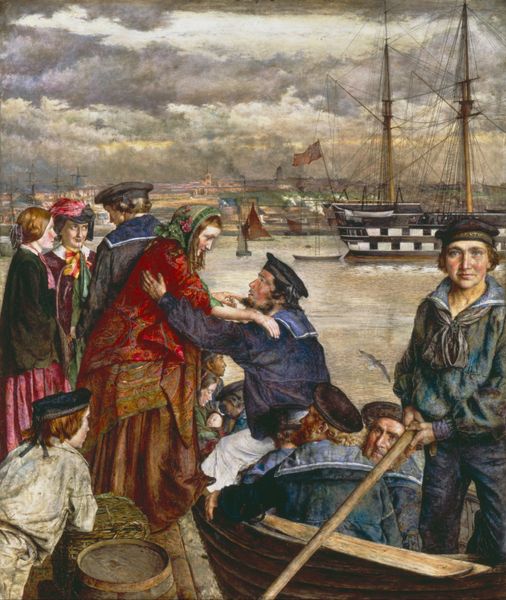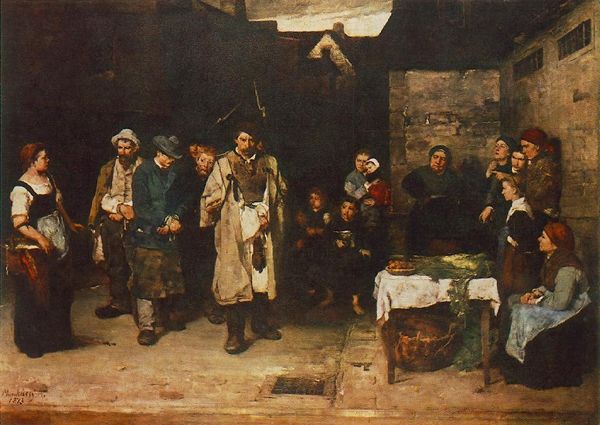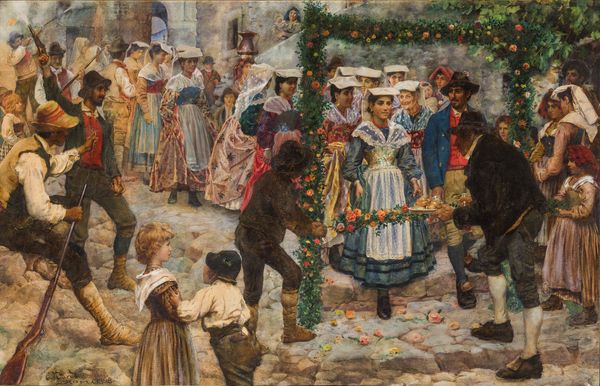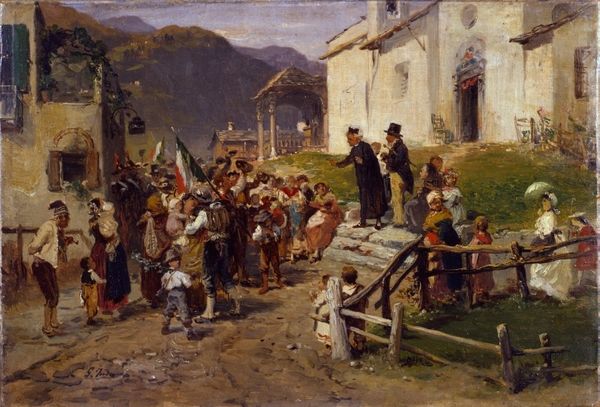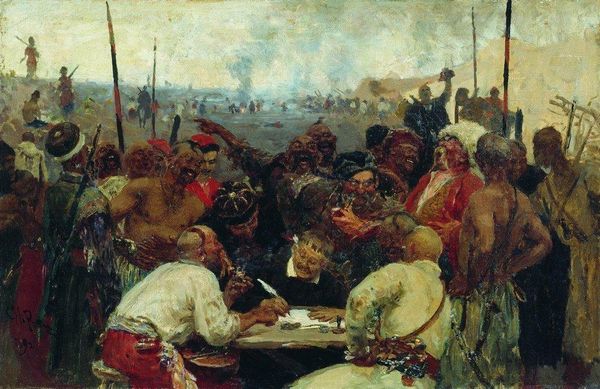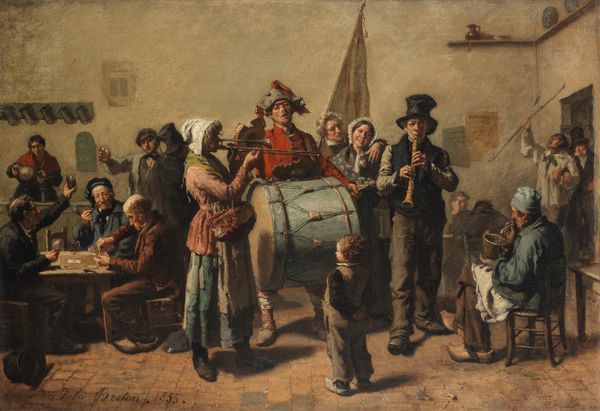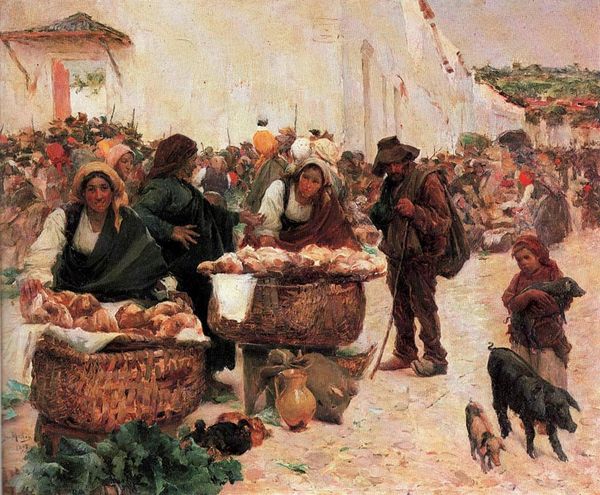
Copyright: Shalom Goldberg
Curator: "The Wedding" by Chaim Goldberg, painted in 1962, is an evocative genre painting rendered in oil on canvas. Editor: It feels melancholic. Even in this supposed moment of joy, a weight seems to press down, particularly in the figures’ expressions and muted tones. There's a sense of somber observance, almost like a collective memory of hardship. Curator: That perceived melancholia is layered, isn't it? The very symbol of a wedding carries profound cultural weight, signifying continuity and hope even in the face of immense historical challenges experienced by the Jewish community, particularly in Eastern Europe, from where Goldberg originated. Look at the chuppah; it’s a simple canopy, yet it represents a home, a future built under often precarious circumstances. Editor: Absolutely. The figures themselves—their posture, their clothing—speak to a specific cultural context. The men with their traditional hats and the women in headscarves, these are markers not just of faith but also of identity in a world where that identity was frequently under threat. I can't help but think of the pogroms, the forced displacements... weddings must have been a radical act of cultural endurance. Curator: Indeed. Consider the musical instruments – violin, clarinet – these weren't just for merriment, but voices of defiance, claiming space and tradition in an often hostile environment. The passing down of these instruments themselves carries significant symbolic importance for future generations to learn and practice. It's not merely a performance; it’s a form of resistance through joyful cultural expression. Editor: And what about the position of the woman looking out the window up above. Could she symbolize an onlooking spirit who's there watching a sacred bond or promise. Also note how close the houses appear, their intimacy representing a safe haven, one to be admired, but yet still fragile in the expressionist portrayal. Curator: She may be the protective and watchful female relative, or some kind of matriarchal symbol. And regarding your read of "fragile," while it’s an event filled with expectation, these kinds of community weddings are also laced with an understanding of past tribulations and, perhaps, anxiety for the future, which Goldberg keenly captures through this kind of distortion. Editor: Seeing how symbols become loaded over time like this only reaffirms how the context shapes our perspective, doesn't it? What initially struck me as somber, I now see as resolute and deeply embedded in community spirit. Curator: Exactly. That's how potent symbols function - resonating differently depending on the historical ear, reminding us to listen to echoes of memory within images.
Comments
No comments
Be the first to comment and join the conversation on the ultimate creative platform.
